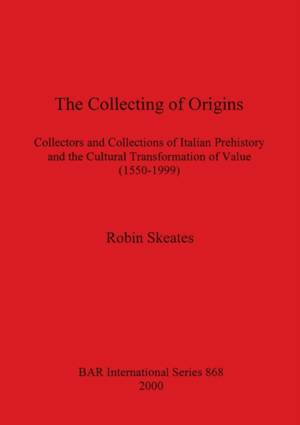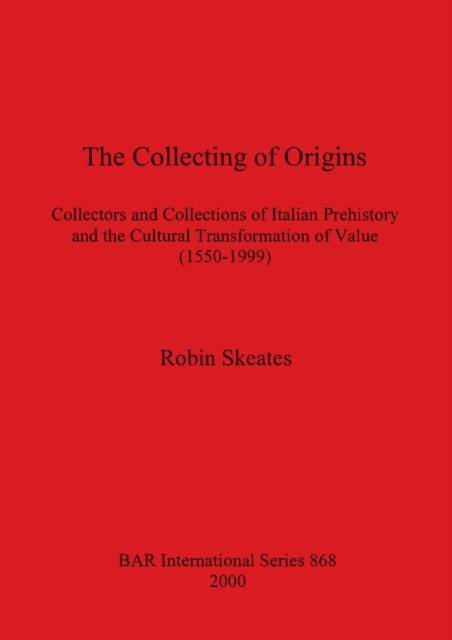
- Afhalen na 1 uur in een winkel met voorraad
- Gratis thuislevering in België vanaf € 30
- Ruim aanbod met 7 miljoen producten
- Afhalen na 1 uur in een winkel met voorraad
- Gratis thuislevering in België vanaf € 30
- Ruim aanbod met 7 miljoen producten
Zoeken
The Collecting of Origins
Collectors and Collections of Italian Prehistory and the Cultural Transformation of Value (1550-1999)
Robin Skeates
€ 88,45
+ 176 punten
Omschrijving
Prehistoric objects were for many years, viewed as curiosities, symbols of an ancient past, collected and desired because of their rarity and longevity. In the 16th century prehistoric objects were making their way into private collections, endowed with the interpretations and beliefs of their owners. Robin Skeates discusses the development of these collections throughout the 16th to 19th century, the various social and political agendas and of the collectors and the different types of collections formed: state, regional, provincial, local museums, university collections, permanent exhibitions and private collections.
Specificaties
Betrokkenen
- Auteur(s):
- Uitgeverij:
Inhoud
- Aantal bladzijden:
- 143
- Taal:
- Engels
- Reeks:
- Reeksnummer:
- nr. 868
Eigenschappen
- Productcode (EAN):
- 9781841711447
- Verschijningsdatum:
- 1/01/2000
- Uitvoering:
- Paperback
- Formaat:
- Trade paperback (VS)
- Afmetingen:
- 210 mm x 297 mm
- Gewicht:
- 517 g

Alleen bij Standaard Boekhandel
+ 176 punten op je klantenkaart van Standaard Boekhandel
Beoordelingen
We publiceren alleen reviews die voldoen aan de voorwaarden voor reviews. Bekijk onze voorwaarden voor reviews.








